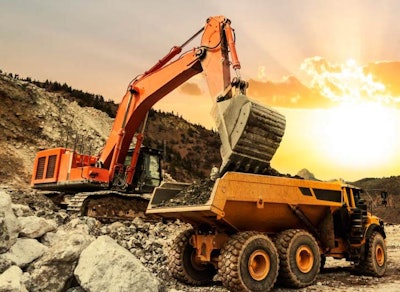
Used oil analysis is a vital part of a hydraulic oil maintenance process. With it, operators can monitor and optimize the life of a hydraulic system. This data gives them a heads up as to what may be affecting the performance of the fluid or the system.
Used oil analysis involves taking a representative sample of the fluid, sending it to a qualified used oil analysis laboratory and then interpreting and acting upon the results.
Incorporated into a proactive maintenance program this process can give users the ability to evaluate trends over time and know when a system may be failing. It also provides a basis for better informed maintenance decisions and recognizing problems before they become too expensive or serious to repair.
Used oil analysis should complement other recommended maintenance processes, such as monitoring oil consumption. Always follow your equipment manufacturer’s specified service interval for oil analysis sampling or sample at regular intervals.
What to look for
Many users believe if an oil looks clean then it is. But the human eye can only detect particulates about 40 microns or greater, and tolerances in critical parts of the hydraulic system — such as pumps or valves — can be as low as 0.5 to 5 microns.
The ISO 4406 particle count standard used in oil analysis can help determine the true cleanliness of the oil.
Used oil analysis also measures viscosity, which is the fluid’s thickness or resistance to flow The lab will use a simple viscosity test (ASTM D445) to measure any changes in viscosity.
Another test — the Fourier Transform Infrared Spectroscopy (FTIR ) — identifies multiple degradation processes and chemical changes such as acid number (AN) and oxidation. FTIR compares the spectrum of used oil with that of the new fluid. The difference between the used and new fluid spectrums indicate what form of degradation is ongoing and to what degree it has occurred.
Oxidation, for example. is a form of degradation that occurs when the fluid is exposed to high temperatures and air (oxygen), a typical problem in hydraulic systems. Oxidation can be assessed through FTIR and via the AN test.
For large and high precision hydraulic systems with servo-valves, additional oxidation testing can be performed such as Rotating Pressure Vessel Oxidation Test (RPVOT). Catalysts such as copper (and other wear metals) or water are known to accelerate oxidation.
Oxidation can cause the oil to darken and increase in viscosity. Additionally, as the degradation takes its toll it can cause formation of sludge, varnish and deposits that settle, as well as the formation of acids.
Higher fluid temperatures dramatically increase the rate of oxidation; the life of the oil is shortened at a quicker rate for every 18-degree Fahrenheit increase.
Using the data
Receiving the used oil analysis data is only the first step. If it’s going to make a difference in how you manage your fleet, you need to quickly review and act on it.
Digital diagnostic tools and asset management reporting — such as Petro-Canada Lubricants’ LUBE 360 Oil Diagnostics — can support efficient and effective data analysis.
Such tools can allow you to view your test results from mobile devices, giving your fleet management team 24/7 access. Easy-to-use dashboard graphs help to prioritize critical results and detect abnormalities. This will help your team proactively track where maintenance is needed and predict where it will be needed.
Author: Neil Buchanan, senior technical services advisor, Petro-Canada Lubricants, a HollyFrontier business.











